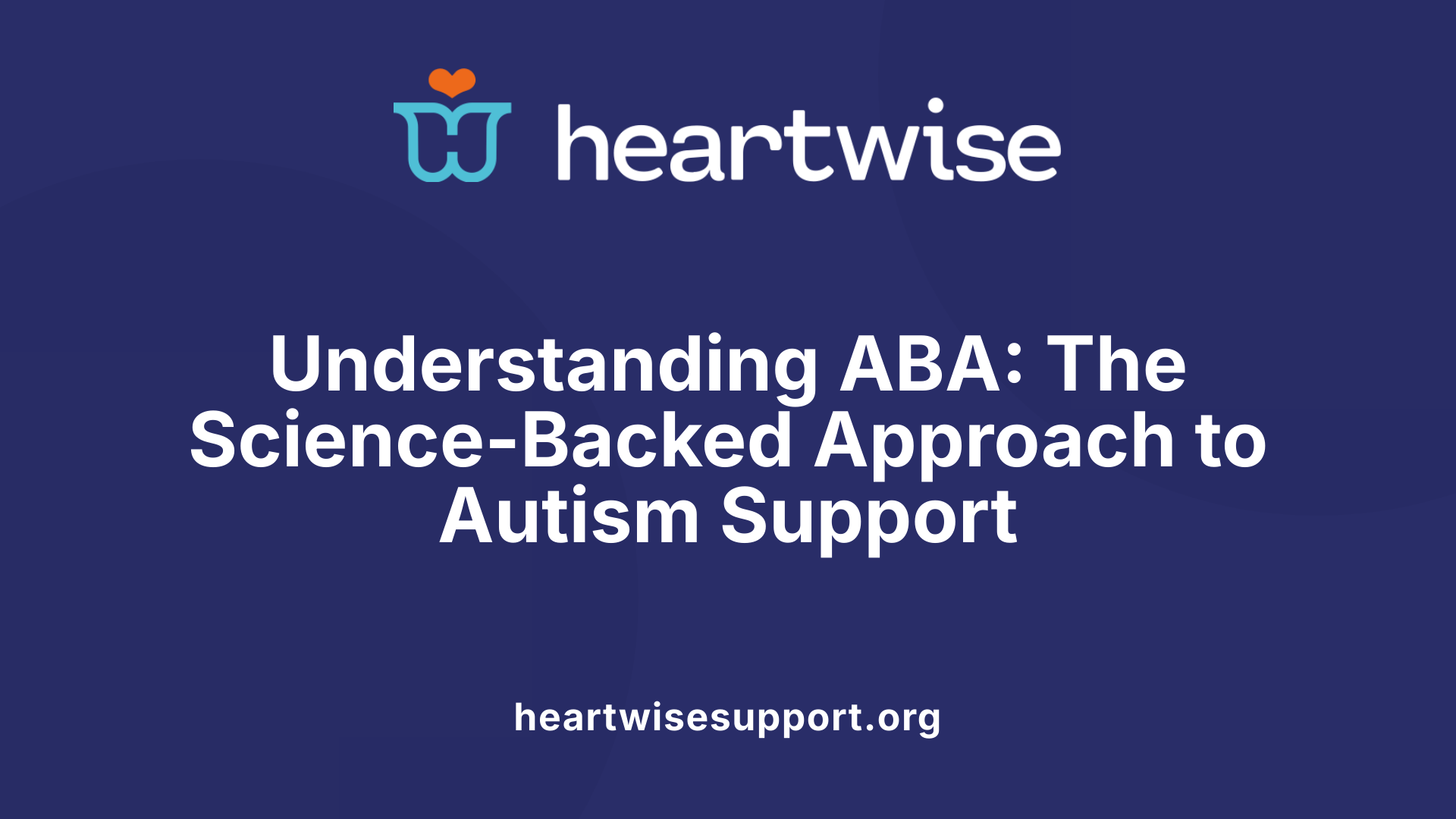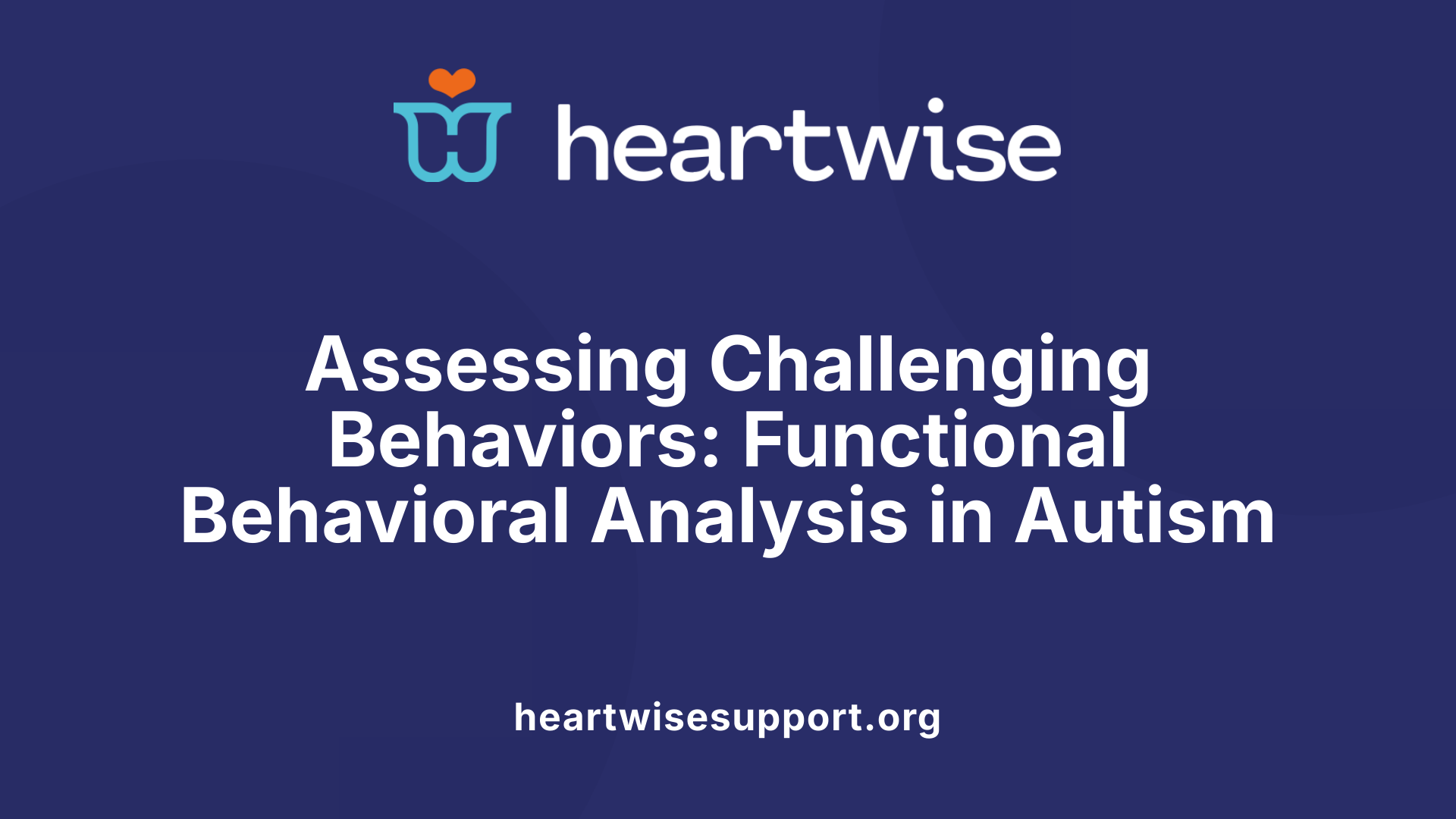Understanding the Power of ABA in Autism Support
Applied Behavior Analysis (ABA) is a scientifically grounded and highly effective therapeutic approach widely used to support individuals with autism spectrum disorder (ASD). With roots stretching back to the 1960s, ABA emphasizes understanding the complex relationship between behavior and environment, enabling tailored interventions that foster meaningful improvements across communication, social skills, and problem behaviors.
What is ABA Therapy and Its Role in Autism Support

What is ABA therapy and how is it used for individuals with autism?
Applied Behavior Analysis (ABA) is a scientifically grounded approach that uses the principles of learning and behavior to support individuals with autism. It involves analyzing how behavior works, what influences it, and how people learn new skills. ABA employs techniques like positive reinforcement, which encourages desired behaviors by offering rewards, and understanding the triggers and consequences of actions through the ABC (Antecedent-Behavior-Consequence) framework.
ABA's goal is to both increase helpful behaviors—such as communication, social skills, and daily living skills—and decrease harmful or disruptive behaviors like aggression, self-injury, or tantrums. It is a flexible therapy that can be adapted to meet each person's unique needs.
The therapy operates on a systematic process: it involves thorough assessment, designing personalized treatment plans, and using data to track progress and make ongoing modifications. Trained analysts known as Board Certified Behavior Analysts (BCBAs) oversee ABA programs, which can be implemented in one-on-one sessions, small groups, or various natural settings including home, school, and community environments.
Research shows that intensive early intervention—often 25 to 40 hours weekly over 1 to 3 years—can lead to notable gains in language, cognition, social skills, and independence. Overall, ABA is recognized as an effective, evidence-based method for helping individuals with autism improve their quality of life.
Core Principles and Techniques of ABA in Managing Behaviors

What are the core principles and techniques of ABA used for managing behaviors in autism?
Applied Behavior Analysis (ABA) operates on several foundational principles that are essential in managing behaviors effectively, especially in individuals with autism. At its heart, ABA uses positive reinforcement to encourage desirable behaviors. When a behavior is followed by a pleasant consequence, such as praise or a preferred activity, that behavior is more likely to occur again.
Another important principle involves analyzing the sequence of events surrounding a behavior, which is called the antecedent-behavior-consequence (A-B-C) framework. Understanding what triggers a behavior, what the behavior looks like, and what outcomes follow helps therapists develop targeted interventions.
ABA employs various behavior modification strategies, such as prompting, modeling, and chaining. Prompts are cues that help the individual perform a desired behavior, which are gradually faded to promote independence. Modeling involves demonstrating desired behaviors, allowing the individual to mimic. Behavior chaining breaks down complex skills into smaller, manageable steps, teaching each part in sequence.
To reduce harmful or problematic behaviors, techniques like extinction — which involves withholding reinforcement for undesired behaviors — are used. Additionally, data collection and analysis help monitor progress and inform adjustments to treatment plans.
Visual supports and prompts, such as picture schedules, social stories, and video modeling, are often incorporated to aid learning, particularly for visual learners. These tools provide clear, consistent cues that enhance understanding and facilitate skill acquisition.
ABA programs are highly customized to meet individual needs. They focus on specific goals, use reinforcement systems and contracts to motivate progress, and often include natural environment teaching to ensure skills transfer across settings. Overall, ABA’s scientific approach and systematic techniques help improve communication, social skills, and reduce challenging behaviors, supporting meaningful development in individuals with autism.
Research Validating ABA’s Effectiveness in Autism
What research supports the effectiveness of ABA in treating challenging behaviors in autism?
A substantial body of research demonstrates that Applied Behavior Analysis (ABA) is highly effective in addressing challenging behaviors associated with autism spectrum disorder (ASD). Numerous clinical trials, including randomized controlled studies, have shown that ABA can significantly reduce problematic behaviors such as aggression, self-injury, tantrums, and property destruction.
Meta-analyses compiling data from multiple studies indicate that ABA leads to small to moderate improvements in key adaptive skills. These include social interaction, communication abilities, and expressive language, which are often areas of difficulty for individuals with autism. For example, research has shown that intensive ABA programs—often ranging from 12 to 24 months with 20 to 40 hours of therapy per week—can produce meaningful developmental gains.
Long-term studies reveal even more compelling results. Children participating in sustained ABA interventions frequently demonstrate notable improvements in standardized measures like the Vineland Adaptive Behavior Scale. These gains include better daily living skills, increased language use, and enhanced social functioning.
While outcomes vary depending on individual factors such as initial skill levels and consistency of treatment, the overall research strongly supports ABA as an evidence-based method. The scientific community recognizes ABA’s robust research base, which spans over four decades, as validating its use in reducing challenging behaviors and fostering positive development.
In summary, the body of evidence confirms that ABA, when implemented with fidelity and adequate intensity, reliably improves multiple areas of functioning in children with autism, making it a cornerstone of behavioral intervention strategies.
Assessment Methods for Challenging Behaviors in Autism

How are challenging behaviors assessed and diagnosed in individuals with autism?
Assessing challenging behaviors in people with autism involves a thorough, multi-faceted approach grounded in the principles of functional behavioral assessment (FBA). This process begins with direct observation of the individual in various settings to document behavior patterns, triggers, and consequences. Observers may use checklists and questionnaires completed by caregivers or teachers to gather detailed behavioral information.
Interviews with caregivers, educators, and the individual, when possible, provide valuable insights into the circumstances around the behaviors. These interviews help identify potential environmental, sensory, or emotional triggers that maintain challenging behaviors. Additionally, medical evaluations such as blood tests, sleep studies, and assessments of medical history are essential to rule out or address physical health issues that might influence behavior, such as allergies, sleep disturbances, or medical conditions.
Understanding the role of physiological factors like interoceptive processing impairments — difficulties in sensing internal states — and set- or event-related factors like fatigue or stress can further clarify what prompts problematic behaviors.
By combining behavioral observations, caregiver reports, and medical assessments, professionals can determine the functions of behaviors—whether they serve to seek attention, escape from demands, obtain sensory input, or communicate needs. This comprehensive understanding guides the development of tailored intervention plans that target the underlying causes of challenging behaviors and support more adaptive responses.
Strategies and Approaches in ABA Interventions
What are effective treatment strategies and intervention approaches within ABA for addressing behaviors in autism?
ABA employs a variety of strategies to help individuals with autism develop skills and reduce problematic behaviors. One fundamental approach is functional communication training, which teaches individuals alternative ways to express their needs, such as sign language or picture exchange communication systems (PECS). This reduces behaviors like tantrums or self-injury that often serve communication functions.
Behavioral replacement strategies focus on teaching adaptive behaviors that serve the same function as problematic ones. For example, replacing aggression with assertive communication or coping skills. Reinforcement is central to these techniques, encouraging positive behaviors to be repeated.
Environmental modifications also play a significant role. Natural environment teaching and visual supports, such as schedules and visual cues, help generalize skills across settings and improve understanding. These adjustments make learning more accessible and practical.
In addition, developmental approaches like the Early Start Denver Model (ESDM) integrate social, cognitive, and language skills in a comprehensive manner. Social skills training and sensory integration therapies are often incorporated to address individual sensitivities and promote social engagement.
Overall, effective ABA interventions are personalized, combining structured techniques like discrete trial training (DTT) and pivotal response training (PRT) with naturalistic strategies. This combination fosters skill development, reduces undesirable behaviors, and supports overall progress tailored to each individual’s needs.
Practical Implementation of ABA to Manage Behaviors
How can ABA be practically implemented to manage behaviors in children with autism?
Applied Behavior Analysis (ABA) can be effectively put into practice by creating structured routines that provide familiarity and consistency for children. These routines include visual supports such as schedules and pictorial cues to help children understand and anticipate daily activities. Clear, predictable transitions between activities help reduce confusion and anxiety.
Incorporating positive reinforcement is central to ABA; using rewards like verbal praise, tokens, or preferred items encourages children to display desired behaviors and learn new skills. Prompting techniques, along with task analysis, break down complex activities into manageable steps, promoting independence in daily tasks.
Collaboration between caregivers and professionals, like Board Certified Behavior Analysts (BCBAs), ensures that interventions are tailored to each child's unique needs. Consistent application of strategies across home and school environments helps children generalize skills and reduces problematic behaviors.
By embedding ABA principles into everyday routines, caregivers can foster behavioral improvements, enhance communication, and support overall growth. This comprehensive approach ultimately promotes greater independence and safety, enriching the child's developmental trajectory.
ABA’s Role in Skill Development and Long-Term Benefits

How does ABA contribute to skill development and behavior modification for individuals with autism?
Applied Behavior Analysis (ABA) plays a crucial role in helping individuals with autism develop important skills and modify challenging behaviors. It uses scientific, evidence-based techniques to teach functional skills such as communication, social interaction, and daily living tasks.
One of the main strategies in ABA is breaking down complex behaviors into smaller, manageable steps. Techniques like shaping, modeling, chaining, and positive reinforcement are used to encourage learning and ensure success. For example, a child might be taught to say words or use gestures through repeated, reinforced practice until they master the skill.
Social interaction skills such as turn-taking, eye contact, and understanding social cues are often targeted within structured social skills groups as part of ABA therapy. These groups provide safe and supportive settings for children to practice social behaviors and build confidence.
Personalized assessments are essential in ABA. Individualized goals are set based on each child's unique needs and strengths. Regular monitoring of progress ensures that interventions remain relevant and effective, allowing therapists to make necessary adjustments.
Overall, ABA’s organized approach helps foster both behavioral change and skill acquisition. It promotes greater independence, enhances social skills, and improves daily functioning, supporting a better quality of life for those with autism.
Preventing Challenging Behaviors in Autism

What strategies can help prevent challenging behaviors in individuals with autism?
Preventing challenging behaviors in individuals with autism relies on creating a supportive and predictable environment. Establishing structured routines and using visual supports can help individuals understand daily expectations and reduce anxiety. Visual schedules, social stories, and picture cues make transitions smoother and promote independence.
Sensory tools and communication aids are also vital. Items like chewy tubes, calming sensory objects, or noise-canceling headphones can address sensory sensitivities proactively. Supporting communication through simple language, gestures, or assistive devices like PECS (Picture Exchange Communication System) can decrease frustrations that lead to challenging behaviors.
A thorough behavioral assessment, particularly Functional Behavior Analysis (FBA), helps identify the specific triggers and functions behind behaviors. This understanding facilitates teaching replacement behaviors—more appropriate ways to communicate or cope—while managing antecedents and consequences effectively.
Environmental modifications play a role too. Adjusting surroundings to be less overwhelming and ensuring engaging, meaningful activities can prevent triggers. Consistent routines, clarity in instructions, and smooth transitions between tasks help maintain calmness.
Caregiver involvement is crucial in prevention. Training and educating parents and caregivers on behavioral strategies ensure consistency across settings. Addressing biological factors, such as medical issues or sensory processing difficulties, further supports comprehensive prevention.
By combining these approaches, individuals with autism can experience fewer challenging behaviors, leading to a more positive and functional daily life.
Examples of Challenging Behaviors in Autism
Many individuals with autism spectrum disorder (ASD) exhibit a variety of challenging behaviors that can impact their safety and daily functioning.
Common challenging behaviors include aggression, such as scratching, biting, hitting, or kicking. These actions may be methods of communication or responses to frustration, anxiety, or sensory overload.
Self-injurious behaviors are also prevalent, with examples like headbanging, hair-pulling, or face-slapping. These behaviors often serve as responses to internal distress or attempts to escape from uncomfortable situations.
Tantrums and disruptiveness are frequent, involving yelling, crying, or refusing to comply with instructions. Noncompliance can hinder learning opportunities and social interactions.
In addition to these, many individuals display repetitive behaviors or stereotypies like hand-flapping, rocking, spinning, or other mannerisms. While often harmless, these behaviors can sometimes interfere with focus or social engagement.
Underlying causes for these behaviors are diverse. They may stem from sensory sensitivities, medical conditions, or difficulties in communication. Anxiety and environmental stressors are also significant triggers.
It is important to recognize that these challenging behaviors can persist into adulthood if reinforced or unaddressed.
Understanding the reasons and functions behind such behaviors enables caregivers and professionals to develop targeted interventions that promote safety, communication, and skill development. Strategies often involve behavioral assessments, systematic support plans, and teaching alternative, functional behaviors.
Harnessing ABA for a Brighter Future
Incorporating ABA into comprehensive support strategies for individuals with autism can lead to significant behavioral improvements, enhanced communication, and greater independence. This evidence-based approach emphasizes understanding each person’s unique needs, systematically addressing challenging behaviors, and fostering skill development. As research continues to evolve and expand, ABA remains a cornerstone of effective autism intervention, with promising potential to transform lives and promote meaningful growth.
References
- Applied Behavior Analysis (ABA) | Autism Speaks
- Challenging Behaviors and Autism
- Treatment of severe problem behaviour in children with autism ...
- Challenging Behaviors Tool Kit - Autism Speaks
- Skill-based treatment for challenging behavior in autism spectrum ...
- How to Address Challenging Behaviors with ABA in 4 Simple Steps
- Can ABA Therapy Help Manage Challenging Behaviors in Autism?
- How ABA Therapy is Transforming the Lives of Children with Autism











